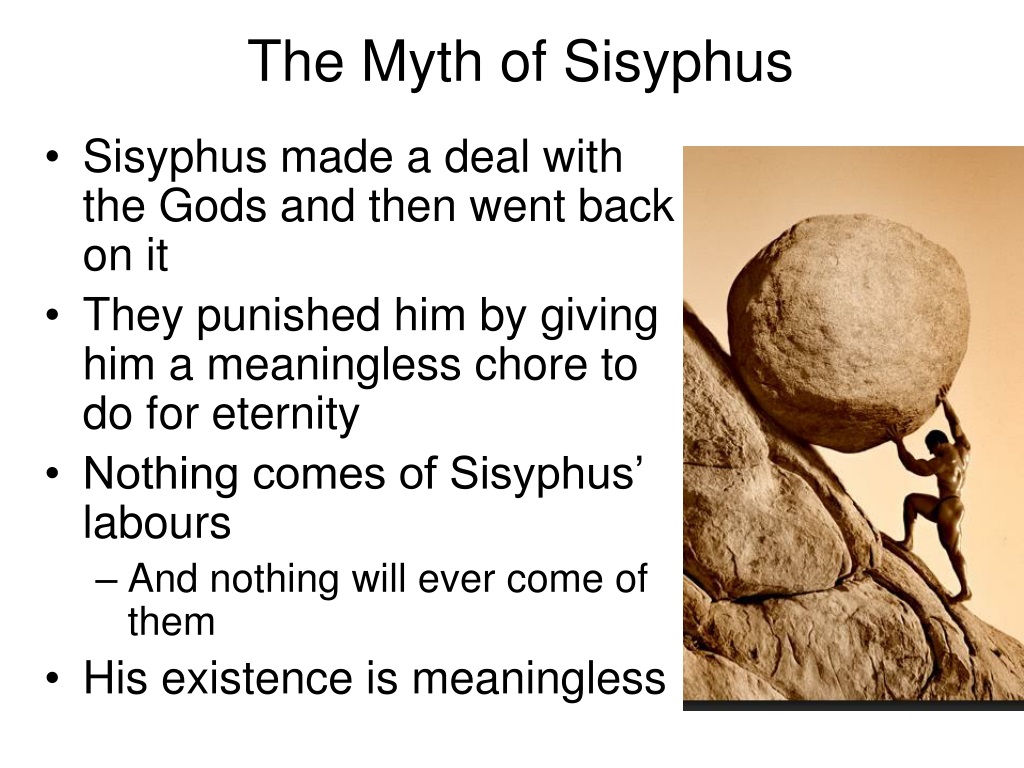

Zeus once again was so infuriated that he told Sisyphus if he doesn’t free Hades, he would make life so miserable for him that he would wish he were dead. The Fates stopped threading and cutting their strings of life and the whole Earth was in chaos. Outside of Hades’ realm, no one could die. Thanatos did not have an answer, and while he was standing there thinking, Sisyphus wrapped the god of death in chains around a tree. The king felt honored that the god of death himself would come take him, but also asked why it wasn’t Hermes who had come to take him, as is usual. By Otto Brausewetter, circa 1904, $\ccpd$Īfter returning to Mount Olympus, Zeus sent Thanatos, the god of death, to steal Sisyphus from the living and chain him in Tartarus. Charon taking souls across the river Styx. To escape Asopus, Zeus turned into a rock, and also changed the girl to the island of Aegina. Zeus was furious but too busy to punish Sisyphus at the time. He relented, and Sisyphus pointed, “Over there!” Asopus looked in that direction and found who other than Zeus carrying off a laughing water nymph. If you could bring a freshwater spring to my city, I will tell you where she is.” Asopus did not want to give in–his water was very valuable, but he also missed his dear daughter. Sisyphus told him, “I know where your daughter is.

He noticed a river god, Asopus, looking for his daughter. One such soul was King Sisyphus, who had been cruel all his life, constantly trying to outsmart the gods. The spirits who had lived bad lives in the world above were horribly punished in the world of the dead, and a few were so evil that they were directly punished by Zeus himself. But more often they thought of him as the god of the bleak world of the dead so they imagined that he was dark and grim in appearance, and they feared him more than they did the other gods, although he was not the one to punish those who were corrupt. They believed that he helped make the seeds sprout and push their leaves above the surface of the earth, and that he gave men the gold and silver which they dug out of their mines. Hades, the god of the underworld, was also a brother of Zeus but the Greeks did not think of him as being bright and beautiful like the other gods. October 21, 1941) brings to life the myth of Sisyphus in a minimalist, maximally evocative black-and-white visual narrative.\)Īdapted from Greek Gods, Heroes, and Men by Caroline H. In this beautiful Oscar-nominated 1974 animated film, Hungarian graphic artist and animator Marcell Jankovics (b. His optimistic tenacity renders him the epitome of the creative spirit captured in Steinbeck’s assertion that a great artist “always works at the impossible.” He may be a tragic hero, but he is first and foremost a hero, precisely for this unrelenting faith in the possibility of accomplishing the impossible. Rather than letting his crushing despair crush him under the collapsing rock, Sisyphus presses on and on and on. Inherent to doing a task so self-defeating over and over without losing heart is the elemental belief that it can be done. But residing in Sisyphus is also something invisible to the pitying or scornful cynic’s eye - not the foolishness of his plight, but its fundamental hopefulness. We call Sisyphean the task of, say, replying to messages in an exponentially overflowing inbox. In modern life, Sisyphus has become a metaphor for laborious futility. In the millennia since, his myth has permeated the fabric of culture, most famously by inspiring Albert Camus’s 1942 masterwork The Myth of Sisyphus, which contains one of the most arresting opening sentences in all of literature and poses philosophy’s deepest question: whether or not life is worth living. Standing among the most memorable heroes of Greek mythology is Sisyphus - the prince whose moral foibles Zeus punished by dooming him to roll a boulder up a hill eternally, the rock rolling back down each time Sisyphus manages to muscle it to the top.


 0 kommentar(er)
0 kommentar(er)
